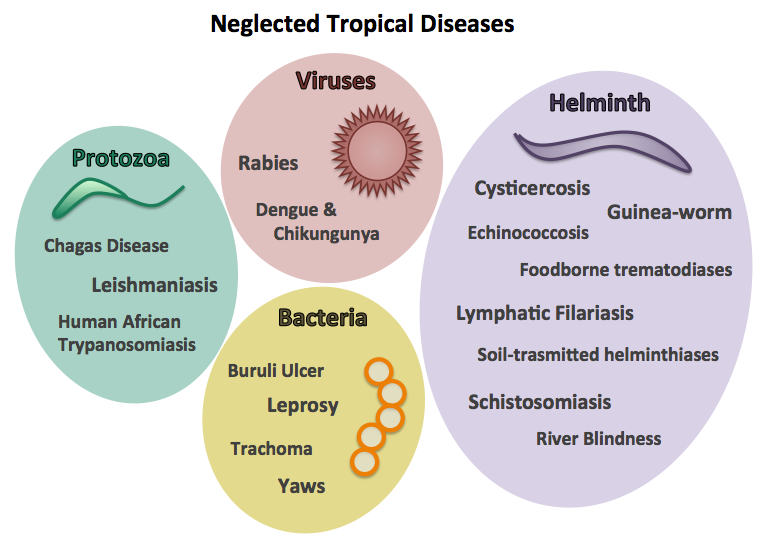Global Report on Neglected Tropical Diseases | 01 Feb 2023
Prelims: About NTDs, World Health Organisation.
Mains: Indian efforts in combating Neglected Tropical Diseases.
Why in News?
Recently, the World Health Organization’s (WHO) has released a Global report on Neglected Tropical Diseases (NTD) 2023, which states that NTD continues to disproportionately impact the most impoverished members of the international community.
- World NTD day is observed every year on 30th January. It was declared in the 74th World Health Assembly (2021).
What are Neglected Tropical Diseases (NTDs)?
- About:
- NTDs are a group of infections that are most common among marginalized communities in the developing regions of Africa, Asia and the Americas.
- They are caused by a variety of pathogens such as viruses, bacteria, protozoa and parasitic worms.
- NTDs are especially common in tropical areas where people do not have access to clean water or safe ways to dispose of human waste.
- These diseases generally receive less funding for research and treatment than malaises like tuberculosis, HIV-AIDS and malaria.
- Examples of NTDs are: snakebite envenomation, scabies, yaws, trachoma, Leishmaniasis and Chagas disease etc.
What are the Highlights of the Report?
- Overview:
- About 16 countries accounted for 80 % of the global NTD burden.
- Globally, nearly 1.65 billion people are estimated to require treatment for at least one NTD.
- Covid-19 impacted the community-based initiatives, access to healthcare facilities and healthcare goods supply chains. As a result, between 2019 and 2020, 34% fewer persons received treatment for NTDs.
- Recommendations:
- Greater efforts and investments are required to reverse delays and accelerate progress towards the NTD road map targets by 2030.
- WHO urged multi-sectoral collaboration and partnerships to achieve these targets.
- It is the need of the hour for additional partners and funders to step up and close the gaps preventing the full-scale implementation of NTD actions at the international and local levels.
What are the Global Initiatives?
- WHO’s New Roadmap for 2021–2030:
- The NTD road map 2021–2030 is WHO’s blueprint to drive global efforts in the fight against NTDs in the context of the United Nations Sustainable Development Goals.
- The Blueprint recommends following measures,
- From measuring process to measuring impact.
- From disease-specific planning and programming to collaborative work across sectors.
- From externally driven agendas reliant to programmes that are country-owned and country-financed.
- London Declaration on NTDs: It was adopted on 30th January, 2012 to recognise the global burden of NTDs.
What are the Indian Initiatives to Eliminate NTDs?
- The Accelerated Plan for Elimination of Lymphatic Filariasis (APELF) was launched in 2018, as part of intensifying efforts towards the elimination of NTDs.
- A WHO-supported regional alliance established by the governments of India, Bangladesh, and Nepal in 2005 to expedite early diagnosis and treatment of the most vulnerable populations and improve disease surveillance and control of sandfly populations (Kala-azar).
- India has already eliminated several other NTDs, including guinea worm, trachoma, and yaws.
- Preventive methods like Mass Drug Administration (MDA) rounds are periodically deployed in endemic areas during which anti-filarial medicines are provided free-of-cost to at-risk communities.
- Vector-control measures like Indoor Residual Spraying rounds are undertaken in endemic areas to prevent sandfly breeding.
- The government also supports morbidity management and disability prevention for those affected by lymphoedema and hydrocele.
- State and central governments have also introduced wage compensation schemes for those suffering from Kala-Azar and its sequela (a condition which is the consequence of a previous disease or injury) known as Post-Kala Azar Dermal Leishmaniasis.

